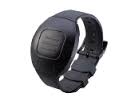On the 111-acre campus of Devon Partnership NHS Trust’s Langdon Hospital in the south Devon countryside, the recently built £27m Dewnans Centre is a medium-secure mental health facility.
It provides care and treatment for people in a setting where security is necessary, but must be handled in an unobtrusive manner, allowing people access in and around the buildings without feeling locked in. Dewnans has four wards with 60 en-suite rooms. Each ward functions as a self-contained unit with separate courtyard gardens, TV lounges, laundry, interview rooms, offices, arts and crafts centres and dining room. There are treatment rooms, workshops, a library and computer centre, music room, sports barn, café and administrative offices on site.
This unit was the first to come online under the newly revised Design Guide for Medium Secure Units. The new guidelines outline design criteria for medium-secure facilities, ranging from principles for room design and maintaining service integrity to testing schedules for building materials. Materials and components used at Dewnans were required to be tamper and vandal proof while maintaining the level of security and safety required for such a facility.
Logiscan Security Systems Ltd., the security integrator on this year-long project, selected the Elpas real-time location system (RTLS) from Tyco Security Products as the backbone for access control and alarms. The installer chose it as Elpas’ Active RFID/RTLS-based system could operate within the constraints of the anti-vandalism directives and withstand harsh use.
The Elpas system could address the Dewnans Centre’s large open spaces and usable space inside and outside, as well as the components of the anti-tampering and anti-vandalism scheme that provided further design constraints. To address possible vandalism, the Elpas radio frequency (RF) readers and low frequency (LF) exciters were positioned in such a way as to work with the design restrictions at Dewnans. RFs were installed in high locations, while LFs were installed inside door frames of each patient’s living area.
Readers below 3m were positioned behind Lexan Marguard plastic and held in place by anti-tamper screws to make them vandal-resistant. This is unlike a traditional proximity system that would need readers positioned where patients and staff had access to them, exposing the equipment to possible vandalism. Another necessary feature was to avoid having a single point of failure, calling for an architecture that was mainly controller-led rather than relying solely on a single-server computer. Dewnans is designed with 38 controller-led networks positioned within individual firebreaks. Each controller is independent of the others, so if one goes down, the rest of the system stays online and the back-end server acts only as an event reporting system.
Fixed wire LED call points are within each patient living area and fixed wire “patient attack” call buttons in the communal areas.
Paul Cavill, engineering director of Logiscan, said: “This project presented unique challenges in identifying a system that would meet the security needs in an unobtrusive style, whilst still complying with the new standards. Fortunately, the Elpas system addressed those issues with its multi-application approach and Active RFID/RTLS technology.”
The installation involved 160-plus doors that can be controlled by staff members, via personnel identity-style tags, and patients, through wrist tags with electronic tamper monitoring. The tags transmit data to the reader and, in turn, each reader relays real-time tag data to the system. Two-button ID tags provide staff access to offices and patient rooms, as needed, with the press of a button. Otherwise, the tags operate hands-free.
The ID tags additionally include a staff duress feature that enables responders to know the location of the staff member in duress and provide a quicker response to the emergency call. Hospital staff on each of the four wards as well as in the hospital’s main control centre can view the RTLS tags worn by employees and patients via use of the Elpas software, which presents the location of active tags on a graphical map of the site. Tied into the system are also paging and public address features.
As a true multi-application system, the Elpas RTLS combines access control, nurse call and staff attack in a single system, making it easier for Logiscan to install and maintain and for Dewnans staff to operate. The Elpas RFID/RTLS at the centre can accommodate other spinoffs as needed and budgeted. This can include drug storage key tracking and location, preventing staff from leaving the premises with sensitive keys; asset tracking; and location logic to identify which patients can or cannot be in the same area at the same time. Elpas also offers the ability to provide temperature monitoring, taff/resident escort and building automation.
Craig O’Dwyer, Community Estates Service Project Manager, said: “With the building of Dewnans Centre, we knew we were given the opportunity to break new ground for mental health centre security. The need to meet the latest design guides, whilst respecting the integrity of patient care, would stand as an example for all centres going forward.”










